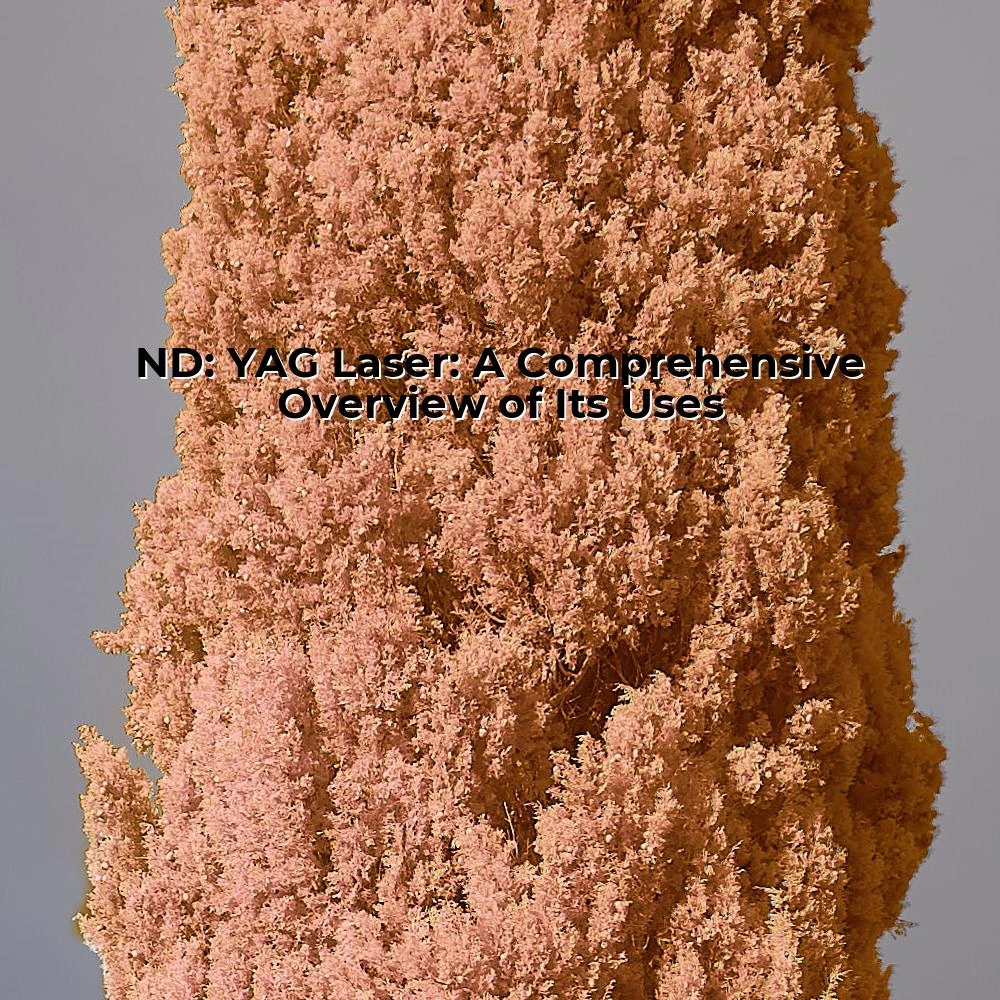ND
| Visit:82

ND
Introduction
ND: YAG laser, short for neodymium-doped yttrium aluminum garnet laser, is a well-utilized tool in various medical practices owing to its multifaceted applications. This high-powered laser system has achieved remarkable success in serving diverse procedures efficaciously across the globe.
Properties of ND: YAG Laser
An ND: YAG laser boasts of a medium that produces a powerful infrared wavelength of around 1064 nm. This allows the laser to penetrate deep into tissue, making it a hot favorite amongst medical practitioners for an entire guild of procedures. Furthermore, these lasers operate in both continuous and pulsed modes, permitting applications varying from laser welding in dentistry to glaucoma treatment in ophthalmology.
Various Applications of ND: YAG Laser
The versatility of this laser emission significantly contributes to several applications. Firstly, in the sphere of dermatology and cosmetics, the laser's ability to target and destroy hair follicles, tattoo pigments, and varicose veins make it an invaluable tool.
Secondly, in dentistry, the ND: YAG laser has seen wide application in teeth whitening procedures, where its high penetration capabilities efficiently treat discolored teeth without causing any damage to the surrounding tissue. Furthermore, it also aids in the removal of dental decay, soft tissue surgeries, and sterilization of root canals.
One of the most beneficial uses of the ND: YAG laser lies in its ophthalmologic application where it counters issues like posterior capsular opacification following cataract surgery. It also treats glaucoma by creating a new fluid drainage pathway in the eye.
Lastly, it is noteworthy how the domain of oncology benefits from this laser application. ND: YAG lasers, due to their deep tissue penetration, have been proven effective in treating early-stage cancers by reducing tumour volume and managing bleedings during surgery.
Safety and Risks
While the advantages of the ND: YAG laser are multifold, it is quintessential for practitioners to adhere to safety protocols to mitigate risks. It is essential to monitor the power settings, cooling systems, and most importantly, patient comfort to ensure a successful procedure. Side effects can include redness, swelling, changes in skin color, or infection, but these are typically temporary if the operation is performed under expert supervision.
Conclusion
In conclusion, the ND: YAG laser is indeed a jack of many trades. It has etched its mark in a diversified arena, demonstrating significant efficacy and beneficial outcomes in various medical disciplines. For every medical practitioner, understanding the potential applications and safety considerations of this robust tool is of paramount importance to provide high-quality care in their practice. For more exploration, kindly visit www.ciellulu.net for an expansive range of information related to the ND: YAG laser and its applications.
Source: ND




 Ciellulu Laser - Facial Machine Supplier
Ciellulu Laser - Facial Machine Supplier

